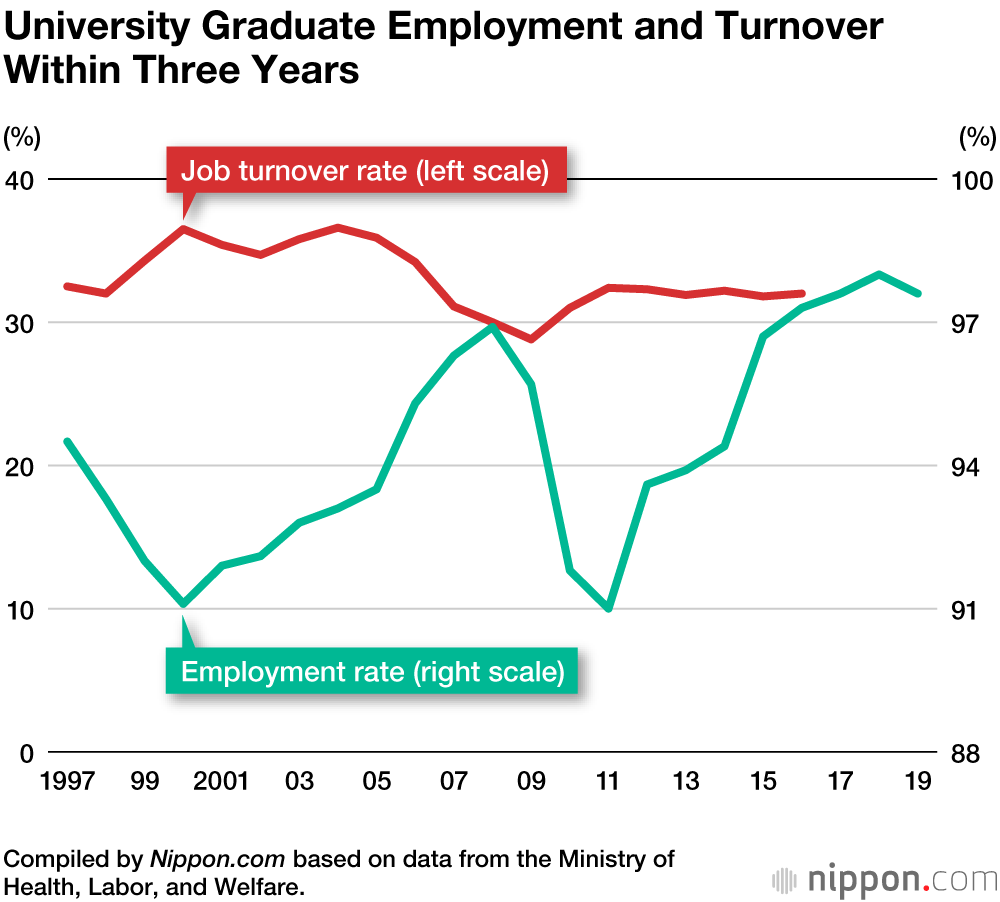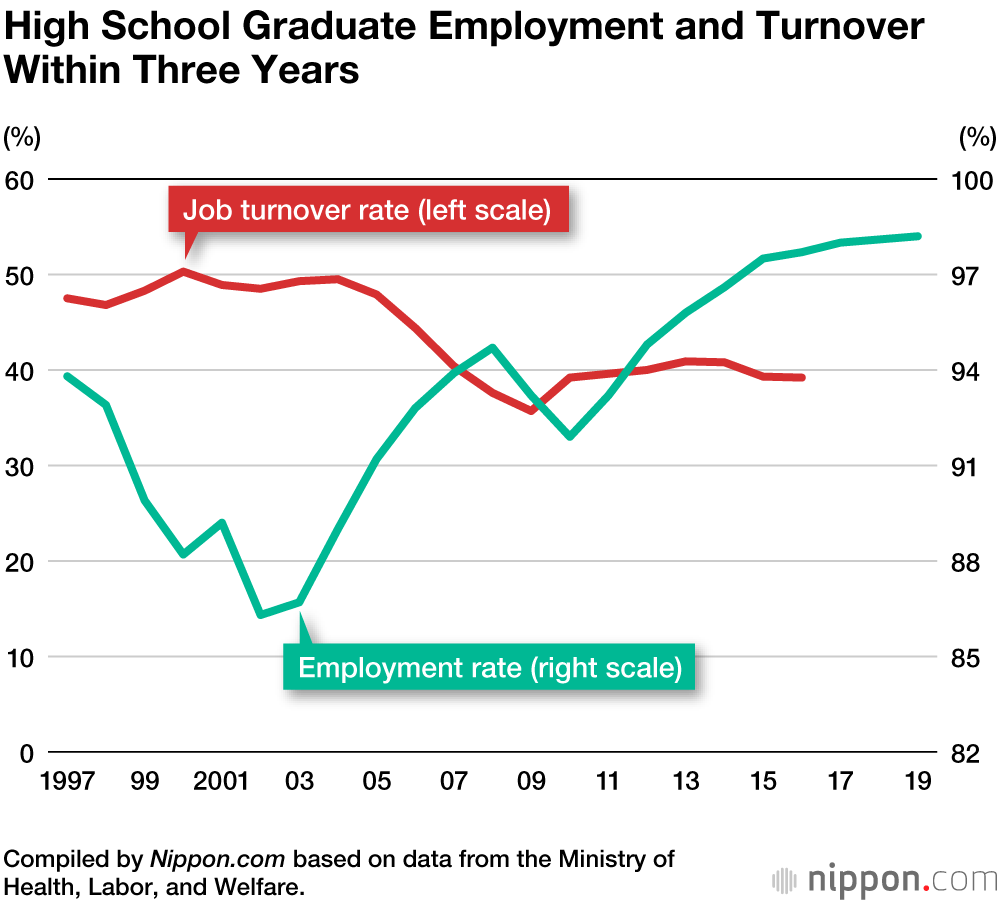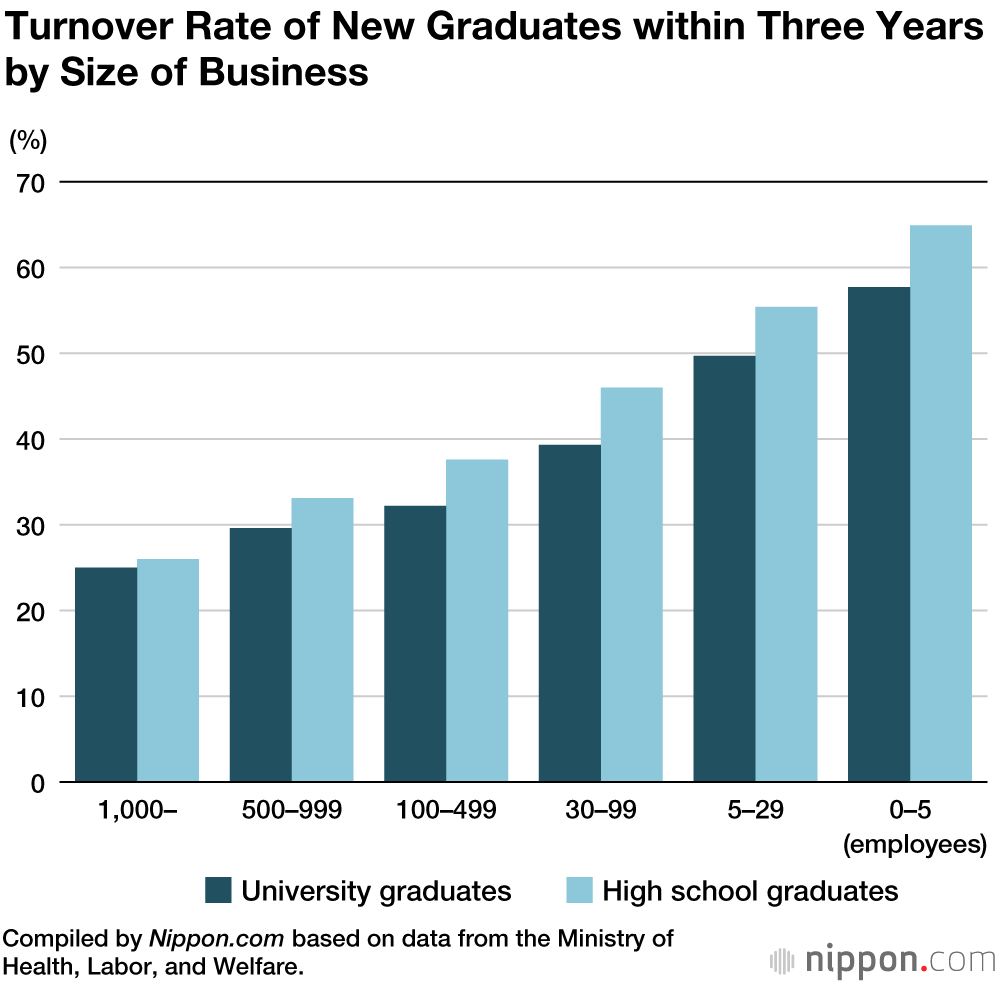
Sticking To It? A Look at Job Turnover Among Recent Graduates
Society Work- English
- 日本語
- 简体字
- 繁體字
- Français
- Español
- العربية
- Русский
The Ministry of Health, Labor, and Welfare has compiled data on new graduates as of March 2016, looking at the turnover rate within their first three years of employment. Broken down by type of graduate, 32.0% of university students (a 0.2-point increase year on year) left their initial positions within that time period. This ratio was outpaced by the 42.0% (up 0.5 point) of junior college graduates, 39.2% (up 0.1 point) of high school graduates, and 62.4% (up 1.7 points) of junior high school graduates who moved to a second job within three years of leaving school.
A look at the shifts up to now shows a visible wave. The ministry points out that in years where there were severe employment conditions, such as a low hiring rate, the job turnover rate tends to be higher. One of the factors influencing that turnover is the employment conditions at the time of graduation.
Smaller companies are more likely to have a higher turnover rate, both for university and high school graduates. For businesses with up to five employees, the turnover rate was 57.7% (a 0.7-point increase) for university graduates and 64.9% (a 0.6-point increase) for high school graduates. In contrast, for companies with more than 1,000 employees, it was only 25.0% (a 0.8-point increase) and 26.0% (a 0.7-point increase), respectively.
The industry with the highest turnover rate for both university and high school graduates was accommodation and food services. This was followed by lifestyle-related services and entertainment, and then education and learning support. In fourth place for university graduates was medical care and welfare and in fifth place retail. For high school graduates, it was retail followed by real estate and goods rental.
(Translated from Japanese. Banner photo © Rina/Pixta.)


